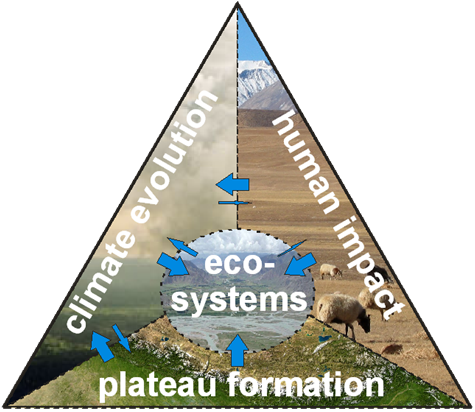Interdisciplinary Atmosphere Ecosystem Experiment in Kema, Tibetan Plateau
KEMA 2010
From 05/2010 to 09/2010Staff: Wolfgang Babel, Lena Becker, Tobias Biermann, Heinz Coners, Thomas Foken, Georg Guggenberger, Siyuan He, Johannes Ingrisch, Yakov Kuzyakov, Thomas Leipold, Yaoming Ma, Georg Miehe, Laura Rose, Elke Seeber, Olga Shibostova, Malte Unger, Karsten Wesche, Yongping Yang
From May till September 2010 the TiP Atmosphere-Ecology-Glacier (AEG) cluster conducted an interdisciplinary experiment in Kema on the Tibetan Plateau. The work was carried out in the framework of the DFG Program SPP 1372 (TiP) and the EU Program CEOP-AEGIS, with collaborating scientist from the Departments of Micrometeorology and AgroEcoSystem Research at the University of Bayreuth, from University of Marburg, Halle and Göttingen, the Institute of Soil Science University of Hanover, Senckenberg Museum of Natural History Görlitz and the University of Cambridge (GB). The partners in China are the Institute of Tibetan Plateau Research (ITP) form the Chinese Academy of Science (CAS), and Beijing Normal University.
The research area is located in Kema a small village 350 km Northeast of Lhasa, the capital of Tibet, 4400 m a.s.l., in the center of the major distribution of Kobressia Pygmaea. Main objective of the experiment which investigated the energy and matter exchange between the ecosystem and the atmosphere, CO2 fluxes and water exchange in soil and plants as well as plant distribution and growth, was to quantify the effect of increasing grazing on the Plateau. Another objective was to investigate if changes in Monsoon intensity effect evaporation and vegetation.
For the grazing experiment an area of 100m x 250m was fenced in 2009 to exclude Yaks, additionally some fences excluding also small mammals were set up in order to quantify the different contribution to the overall grazing effect. On degraded slopes fences were set up to monitor the recovery of the ecosystem when grazing is excluded.
During the observation period in summer 2010 two Eddy Covariance (EC) systems, soil chambers and also 13C labeling was used to quantify CO2 fluxes. The EC systems were also used to investigate the latent- and sensible heat flux, additionally the radiation and ground heat flux was recorded to estimate the energy balance. The evaporation was estimated with lysimeters and the EC systems. A weather station was used to record basic meteorological parameters. The soil chambers were operated by the University of Hanover and the lysimeters by the University of Göttingen. The 13C labeling experiment was carried out by AgroEcoSystem Research of the University of Bayreuth. The turbulent fluxes and meteorological parameters were measured by the Department of Micrometeorology University of Bayreuth. Additional lysimeters to monitor dew fall were set up by the University of Cambridge. The plant monitoring was carried out by the University Göttingen and Marburg and the Senckenberg Museum of Natural History Görlitz. During the field season the German scientists were accompanied by scientists from the Institute of Tibetan Plateau Research, which also helped with logistical support.
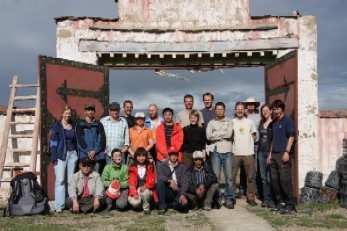

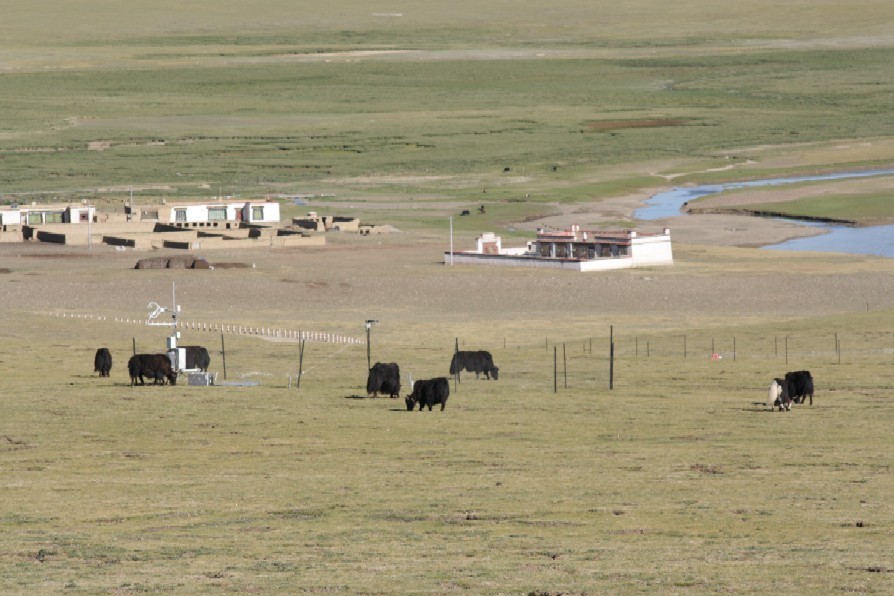
From left to right: The Scientists in Kema, Thomas Leipold during the installation of a EC system, Fieldsite with Yaks and the research station in the background



From left to right: Lena Becker operating the soil chamber, Siyuan He during an infiltration experiment, the group from Göttingen installing the lysimeters


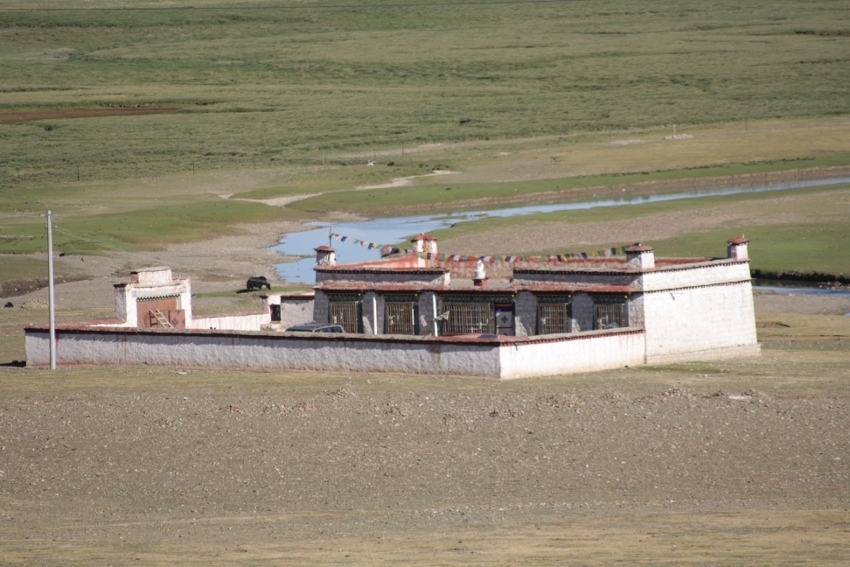
From left to right: Yakov Kuzyakov taking soil cores, Elke Seeber during the installation of new fences, the research station in Kema
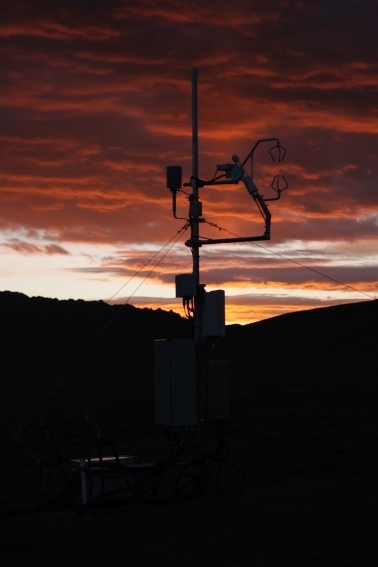
The EC system

